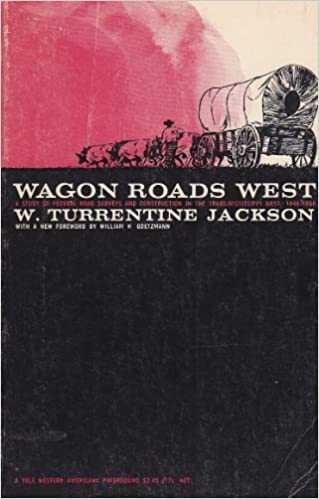W. Turentine Jackson, Wagon Roads West: A Study of Federal Surveys and Construction in the Trans-Mississippi West, 1846–1869 (University of California Press, 1952)
 This book is a meticulous, exhaustive study of the role of the federal government in building roads in the west from the time of popular emigration to Oregon and California to the opening of the transcontinental railroad. It is not a fun read. Rather, it is a detailed, well-footnoted, straightforward recitation, largely of information from government reports, of the development of the major military and wagon roads.
This book is a meticulous, exhaustive study of the role of the federal government in building roads in the west from the time of popular emigration to Oregon and California to the opening of the transcontinental railroad. It is not a fun read. Rather, it is a detailed, well-footnoted, straightforward recitation, largely of information from government reports, of the development of the major military and wagon roads.
The book is decidedly academic, a great sourcebook for the details behind the assertions of more popular histories that involve roadbuilding. It traces the genesis of federal involvement, with the Army taking responsibility for building military roads, through the shift in responsibility to the Interior Department and its Pacific Wagon Road Office, established in 1857. On the way it details the constitutional arguments for and against federal authority to construct road improvement in states and territories, as well as the progress of each road from survey through construction. Among the roads covered is Lt. James Simpson’s survey of the territory between Salt Lake City and the Sierra Nevada, which set a path across the desert south of Salt Lake City and obviated the need to go north around the Great Salt Lake (which in addition to being longer was more liable to attack, as well as being nearly impassible in winter). George Chorpenning, who held the Sacramento–Salt Lake City mail route was among the first to use Simpson’s new route. It is also the one followed by the Pony Express.